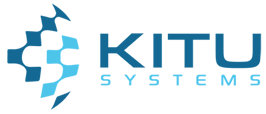SEP2 or IEEE 2030.5
Smart Energy Profile 2.0 (SEP2 or IEEE 2030.5) was created by Utilities as a standard to manage energy in the customer premise either directly or indirectly through a customer energy management system. It was conceived to address the shortcomings of ZigBee Pro Smart Energy 1.x with respect to ease of use, extensibility and security.
The original use cases are primarily focused on managing peak energy demands of the end load devices but also included managements of generation behind the meter, which may prove to be the more critical issue to solve.
The concept is that end devices that can have control over their energy flow match the power available from the grid or local micro-grid, to assist in helping to balance the system. This improves the efficiency and therefore lowers cost but more importantly more and more energy is generated by intermittent sources such as Solar and Wind and may not be available all of the time.
How is that possible?
Many of the devices that you may have in your home, do not need to consume energy at a specific time but may be deferred or advanced, and may not impact the building owner. Examples are:
-
A thermostat controlling air conditioning cycles on and off to maintain temperature
-
A pool pump runs a certain volume of water through a filter to clean a pool by passing
-
A refrigerator defrost cycle or ice-making cycle
SEP2 supports key pillars for Internet of Things (IoT):
-
Automated Discovery & Configuration. Just like how your iPhone can magically discover a local printer without any user intervention, SEP2 uses a similar protocol (xmDNS/DNS-SD) to allow your home devices to automatically discover resources on your local network. For example, your Smart Thermostat can automatically discover the current and future price of energy from your Smart Meter.
-
Zero End Device Configuration and Automatic Resource/Event Discovery. Using the xmDNS/DSN-SD protocol, a home device queries for resources on the local network, and other devices that hosts resources responds. For example, your Smart Thermostat sends a query for energy pricing information. The Smart Meter has this information, so it responds to the query with its IP address as well as the location of the pricing information. After receiving the Smart Meter’s address and location of the pricing information, the Smart Thermostat gets the pricing information from the Smart Meter.
-
Ideally suited for headless devices (no visual display) e.g. Water Heaters, Pool Pump Controllers etc.
-
-
Secure (Meets NIST Cyber Security Requirements NISTR 7268). SEP2 uses encryption and other cryptographic algorithms that comply with the NSA Suite B standard. Compliance to the NSA Suite B standard means that SEP2 security provides the same level of protection used to secure government documents classified at the SECRET level.
-
IP-centric – SEP2 is natively IP, and supports multiple physical (wired or wireless) transports – Wi-Fi, ZigBee and HomePlug
SEP2 leverages Extensible Markup Language (XML) for all messages exchanged to implement the protocol. This allows easier integration into Web 2.0 platforms and business applications.
Standardization
SEP2 is an industry open standard, based on open technologies such as REST/HTTP and XML. It was developed industry standards organizations - ZigBee Alliance supported by HomePlug Alliance.
It was ratified and released under as an IEEE standard – IEEE 2030.5 and is also included in the SGIP Catalog of Approved Standards.
An alliance of alliances called CSEP (Consortium for SEP) consisting on WiFi, ZigBee, Bluetooth, HomePlug created a Test specification and plan and selected a Vendor and test set to certify product. Conformance will be tested by UL.
Function Sets & Device Support
SEP2 defines a complete set of functions that provides comprehensive coverage for managing energy and energy information. These function sets include:
-
Time
-
Device Capabilities
-
Billing
-
Demand Response / Load Control
-
Distributed Energy Resources
-
End Device Control
-
Flow Reservation
-
Log Events
-
Metering / Meter Mirroring
-
Messaging
-
File (Software) Download
-
Pricing
And it supports a wide variety of devices:
-
Programmable Communicating Thermostat
-
Strip Heaters
-
Baseboard Heaters
-
Water Heater
-
Pool Pump
-
Sauna
-
Hot tub
-
Smart Appliance
-
Irrigation Pump
-
Managed Commercial and Industrial (C&I) Loads
-
Simple misc. (Residential On/Off) loads
-
Interior/Exterior Lighting
-
Interior Lighting
-
Electric Vehicle and EVSE (Charging)
-
Generation Systems
-
Load Control Switch
-
Smart Inverter
-
EVSE
-
RESU
-
Energy Management System
-
Smart Energy Module
-
Phone/Tablet/Computer
Why SEP2?
-
It is the only International open standard that manages energy in the home and business at the device level.
-
It can manage at all levels, the generation and load of end devices by a utility, aggregator, micro-grid and the consumer to minimize the peak, balance the load and generation and manage the operation of net-zero buildings and micro-grids.
-
It is highly secure and is zero configuration for end devices making it easy to install and maintain.
-
It operates over any physical layer that supports IP such as Wi-Fi, ZigBee IP, Thread, Bluetooth, HomePlug PLC and Ethernet.
-
It can manage multiple different devices in unique ways such as the set point for a thermostat, volume of water for a pump or Volt-Watt curve for a Solar Inverter.
-
Products available that have been conformance tested will be available in 2015.
